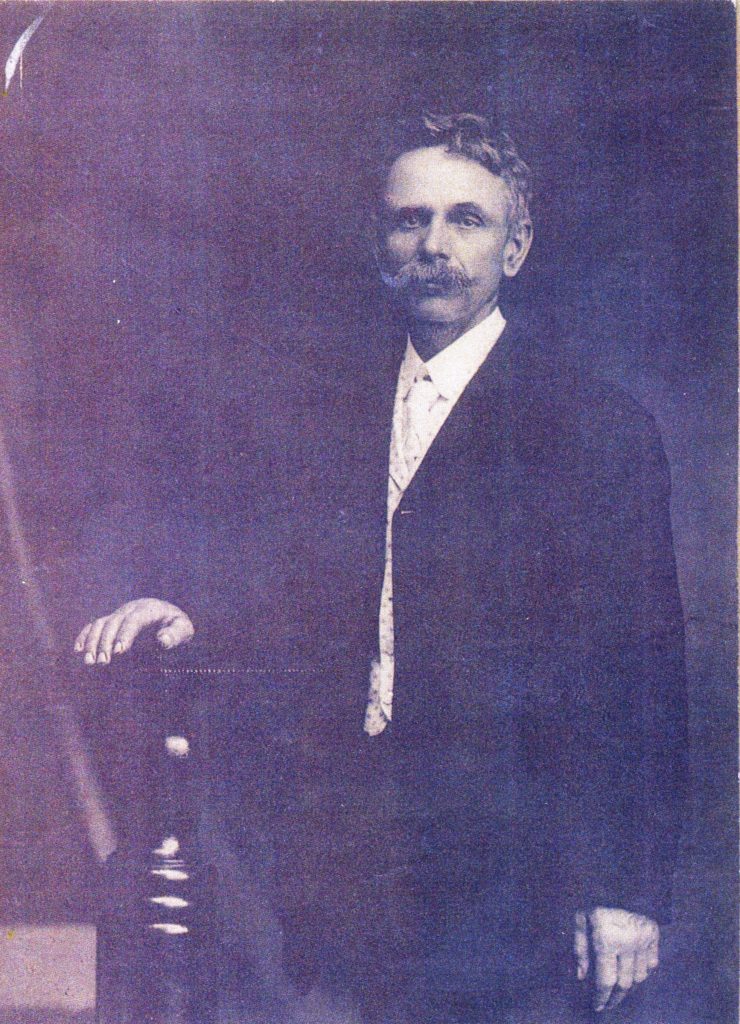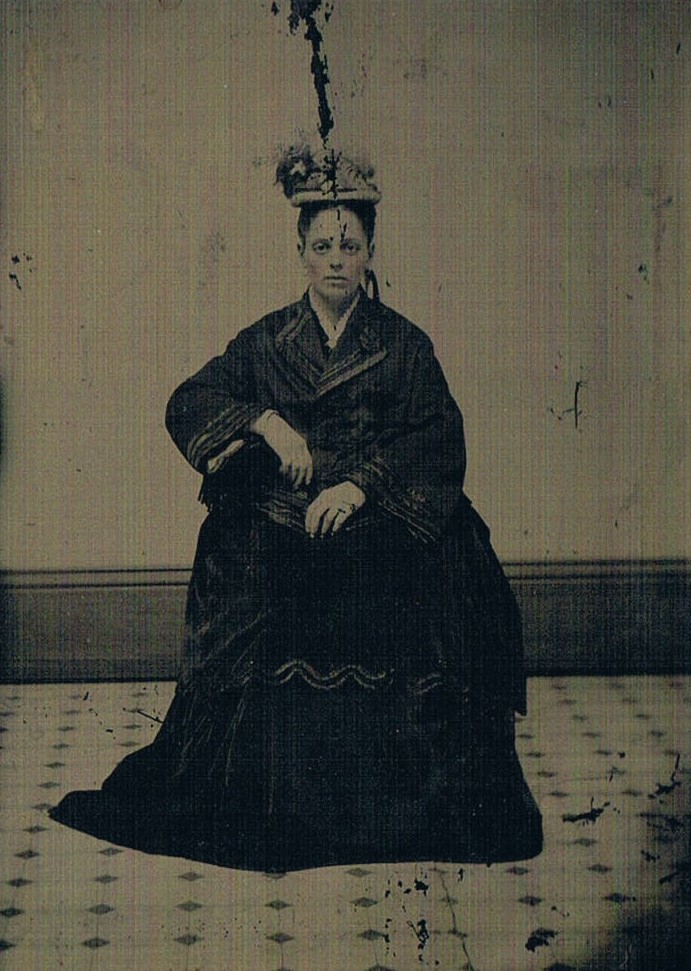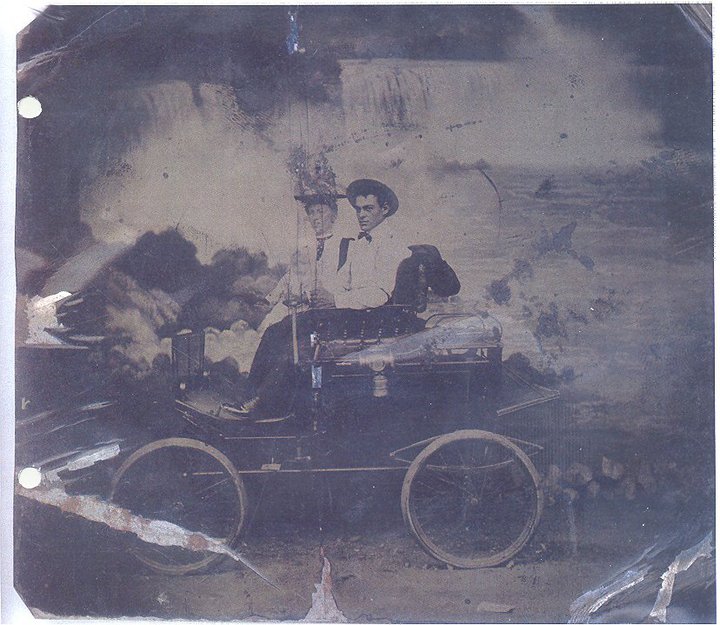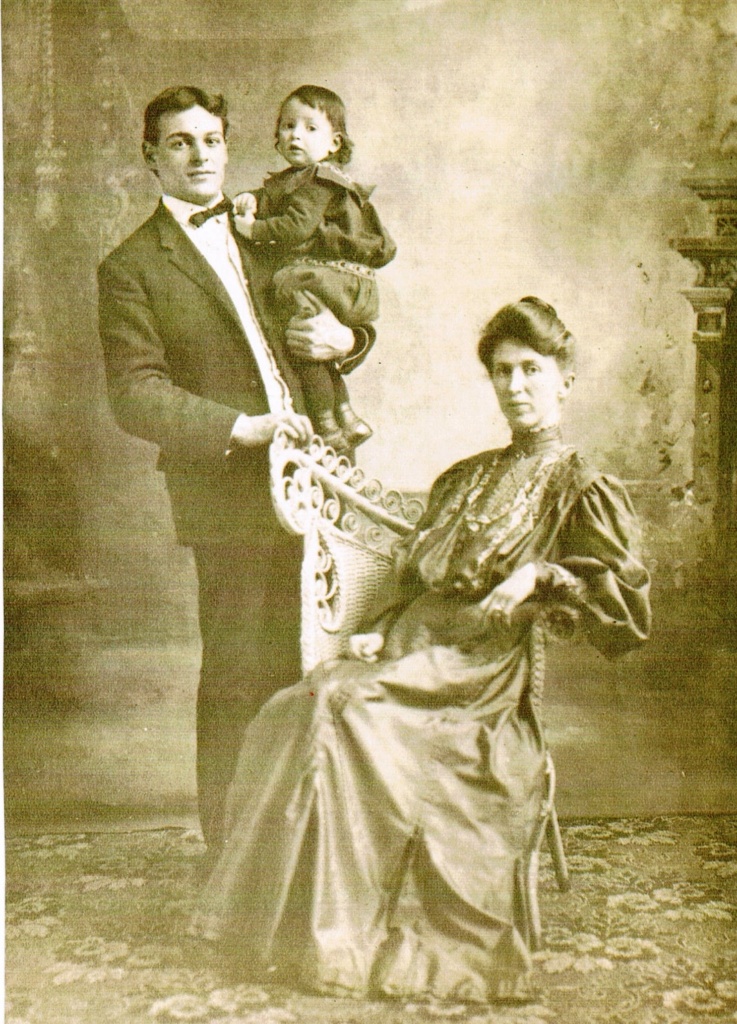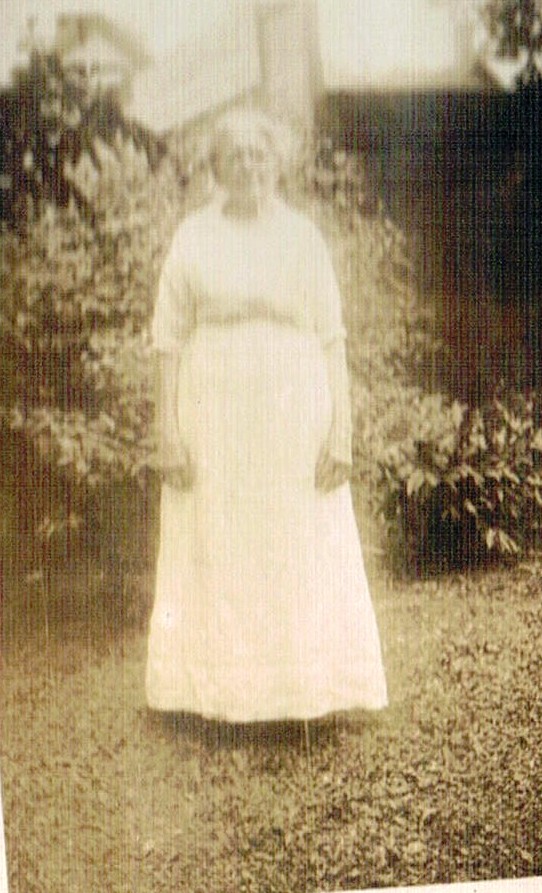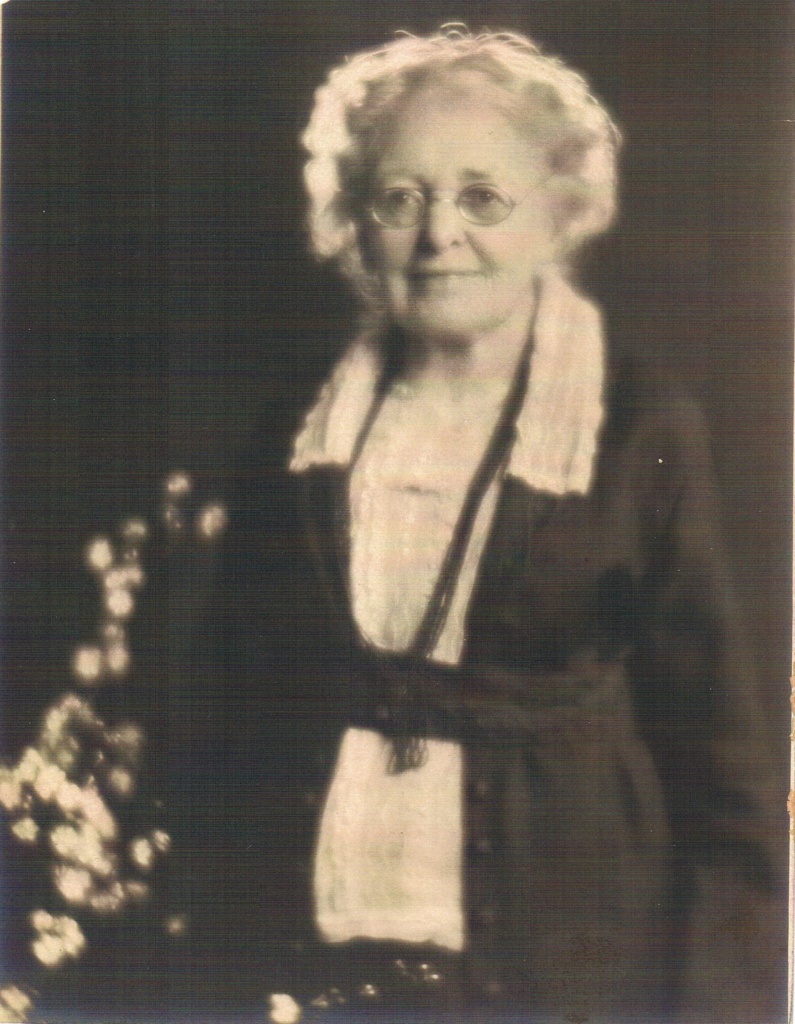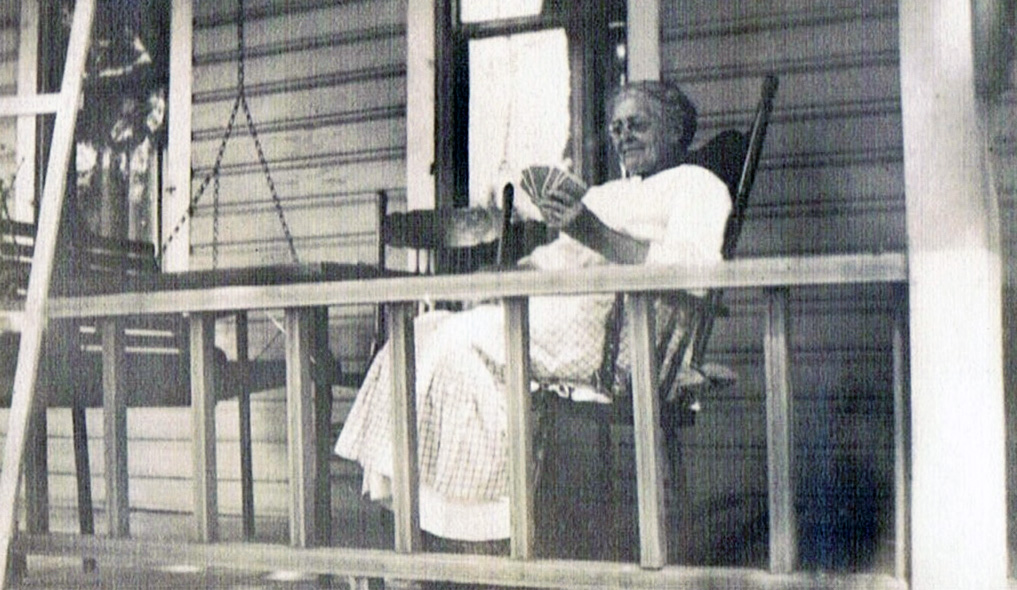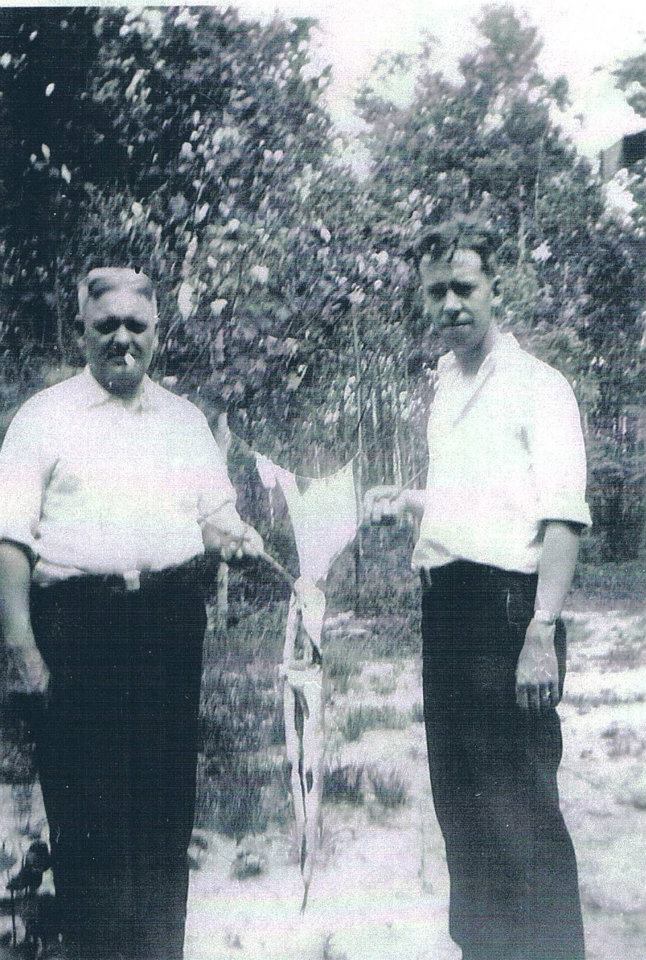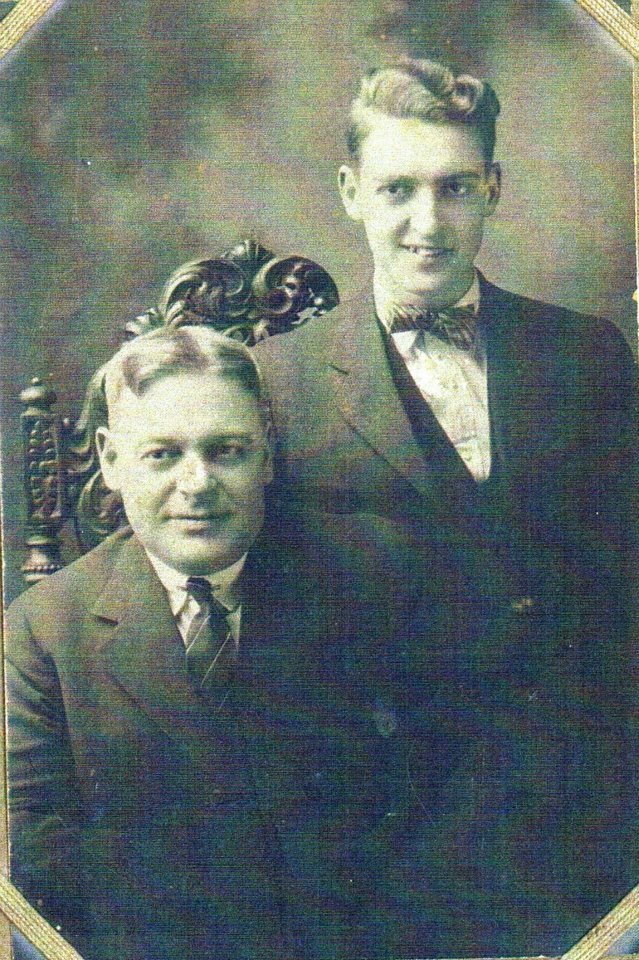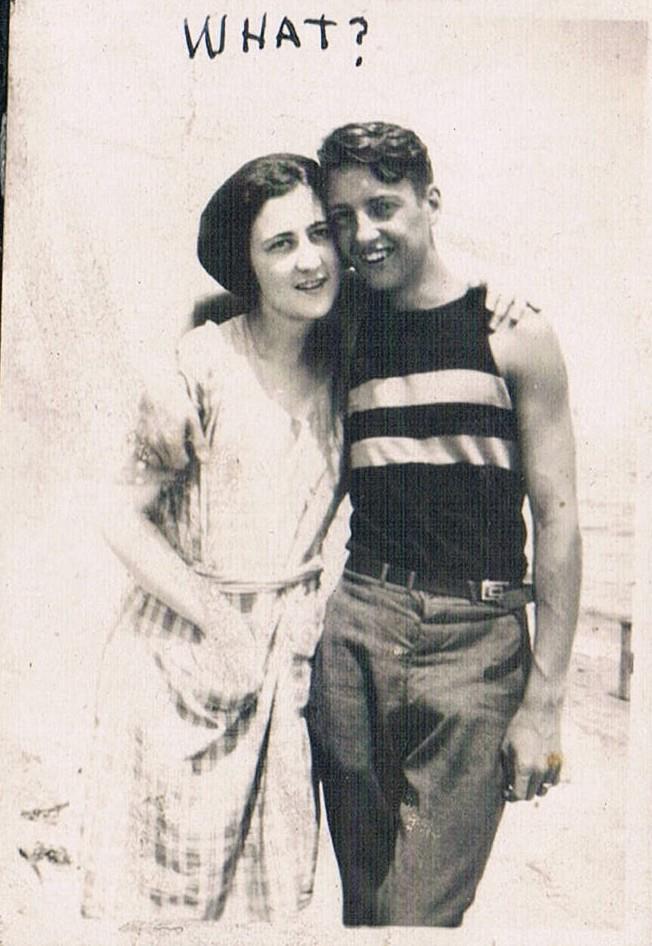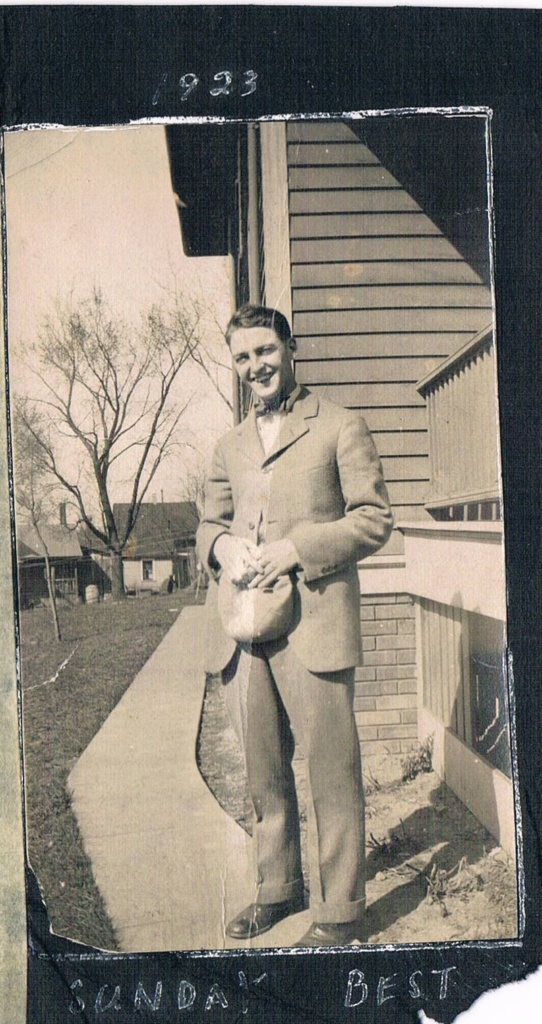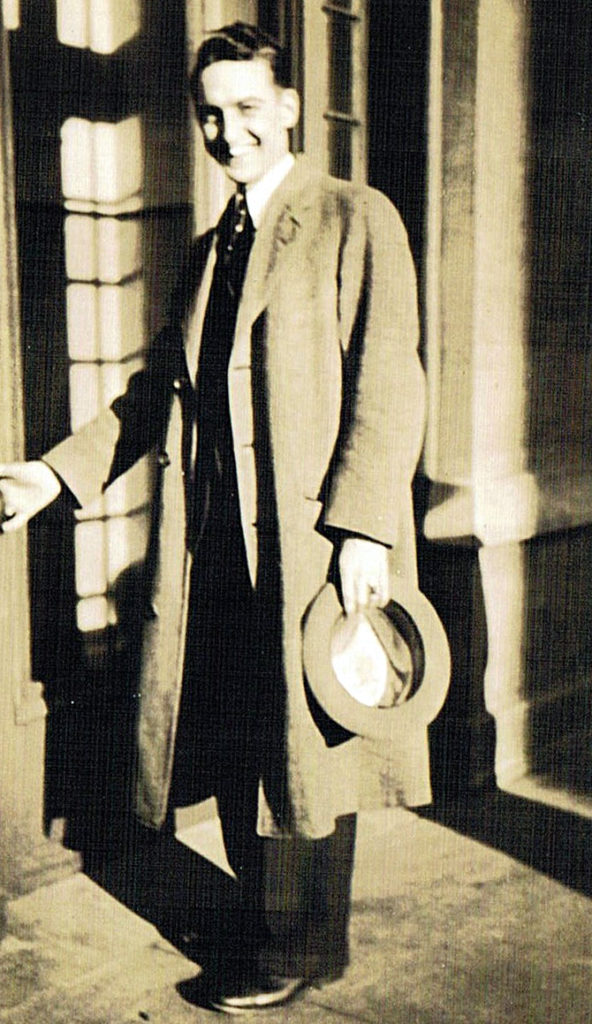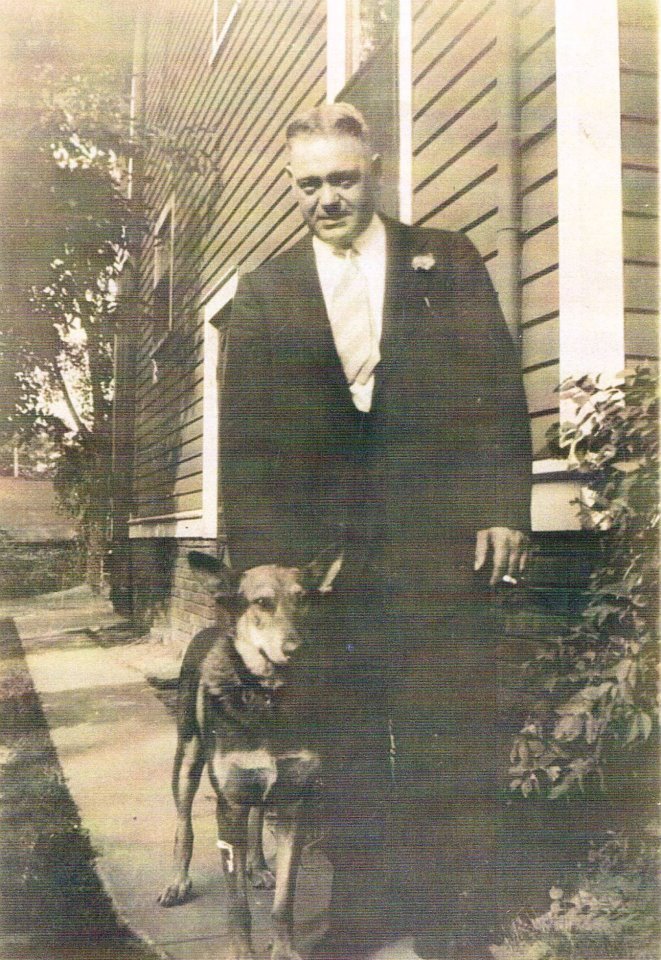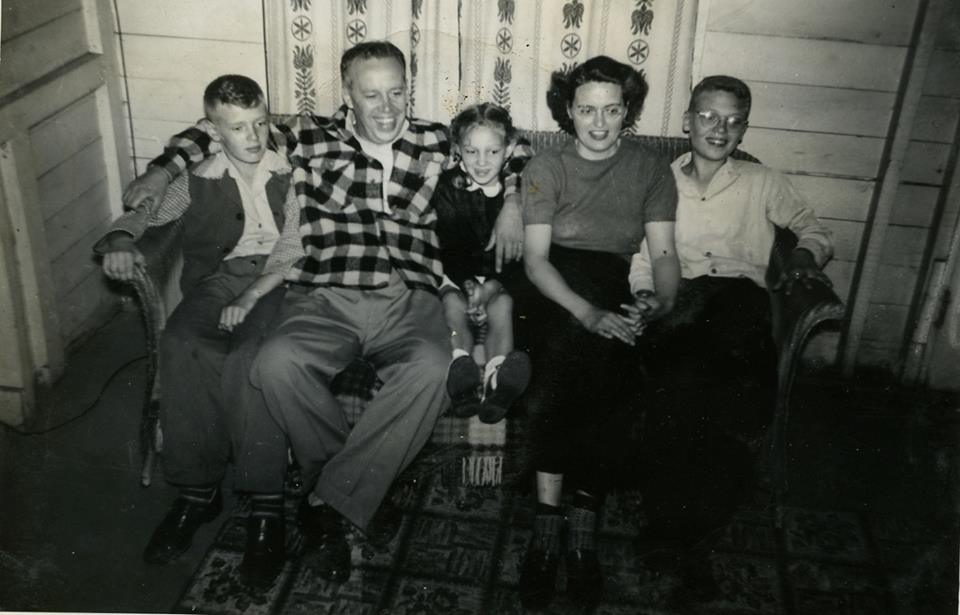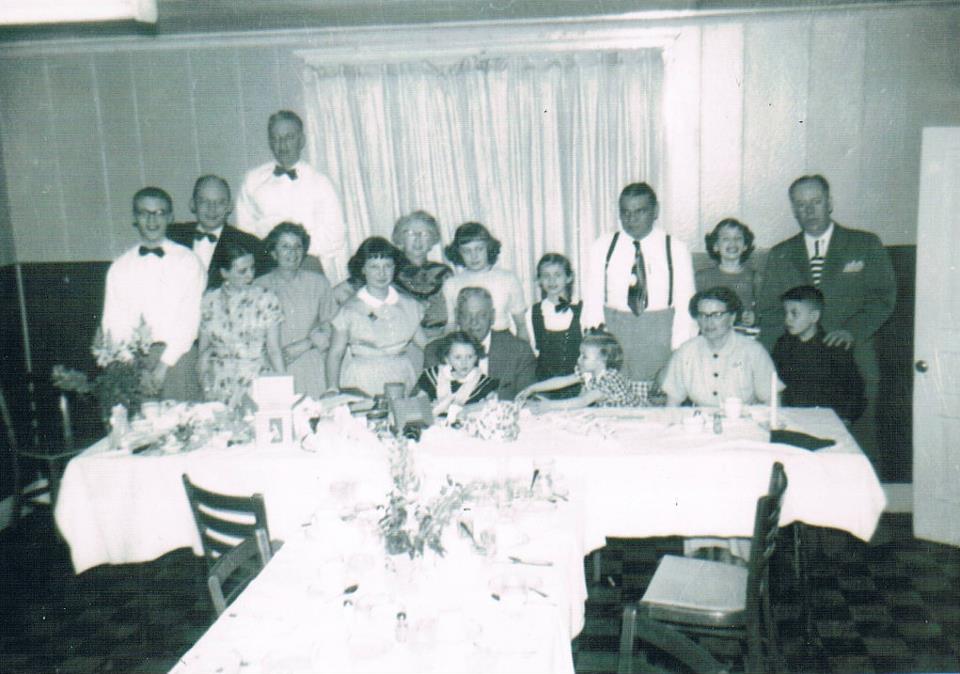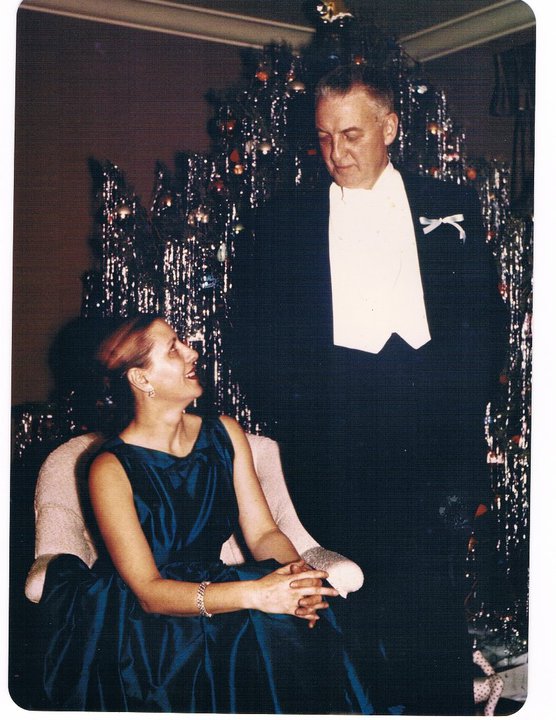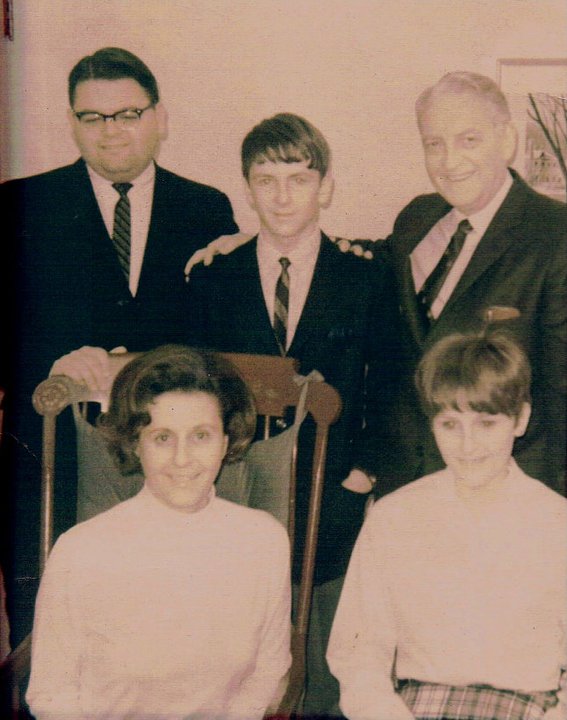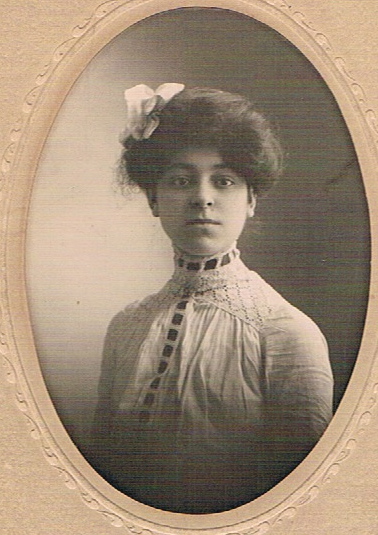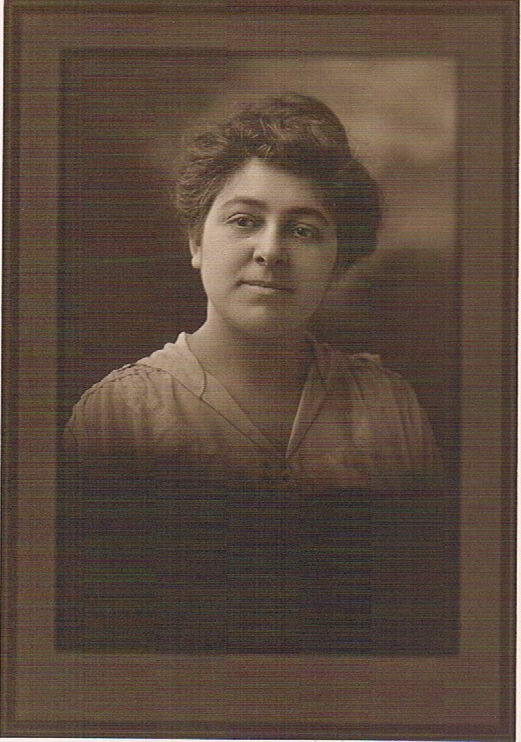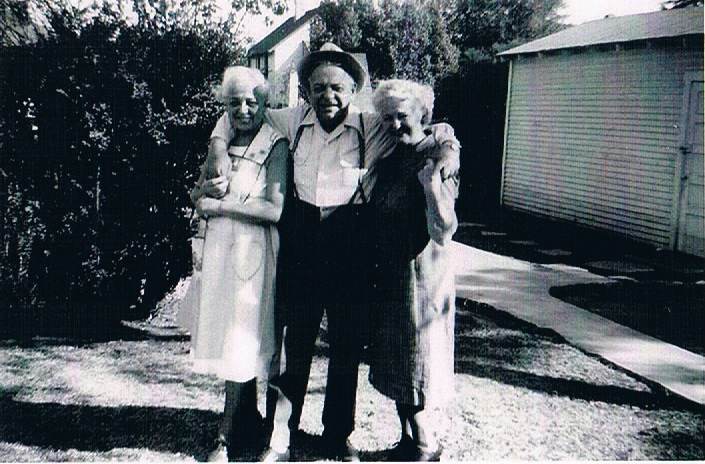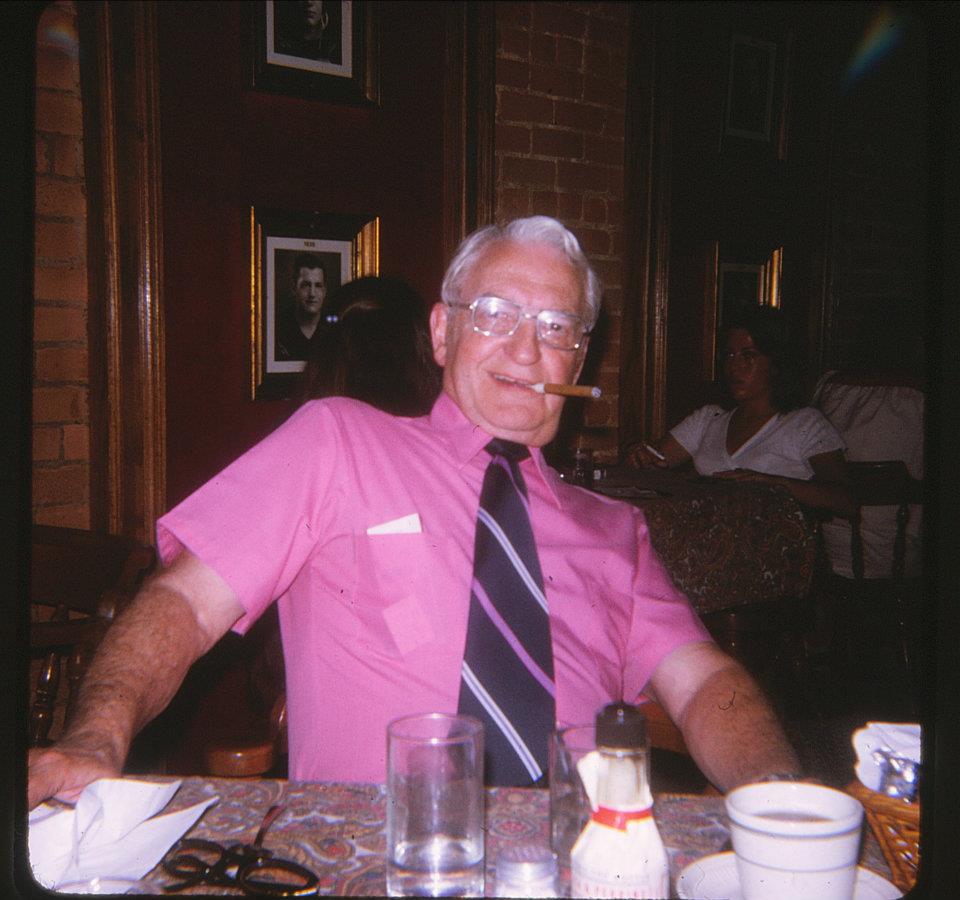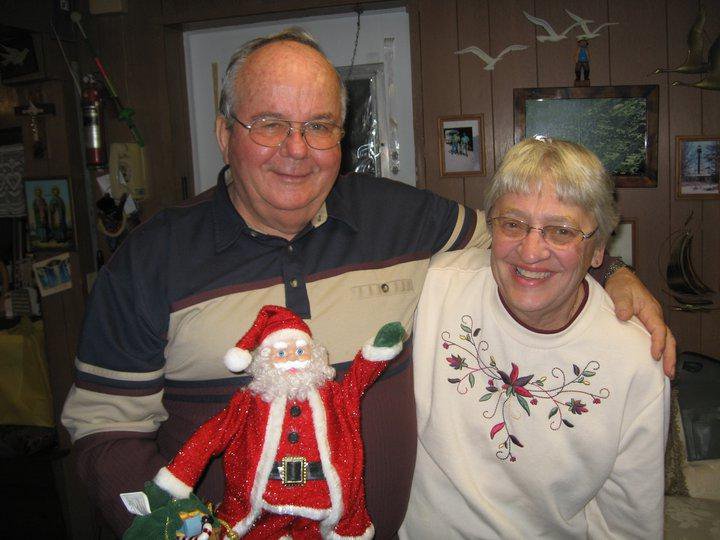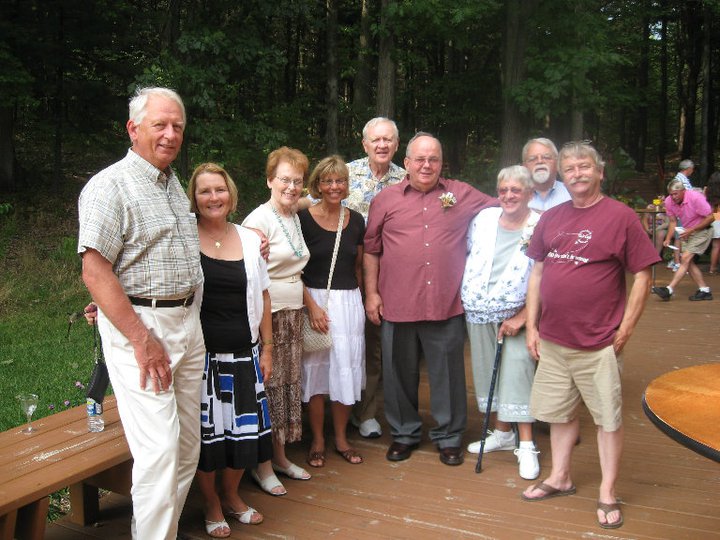The Eastern Michigan Picards: Alfred, Alex, and a Story of Assimilation
Note: Material down to Jerry LaChappele Transferred
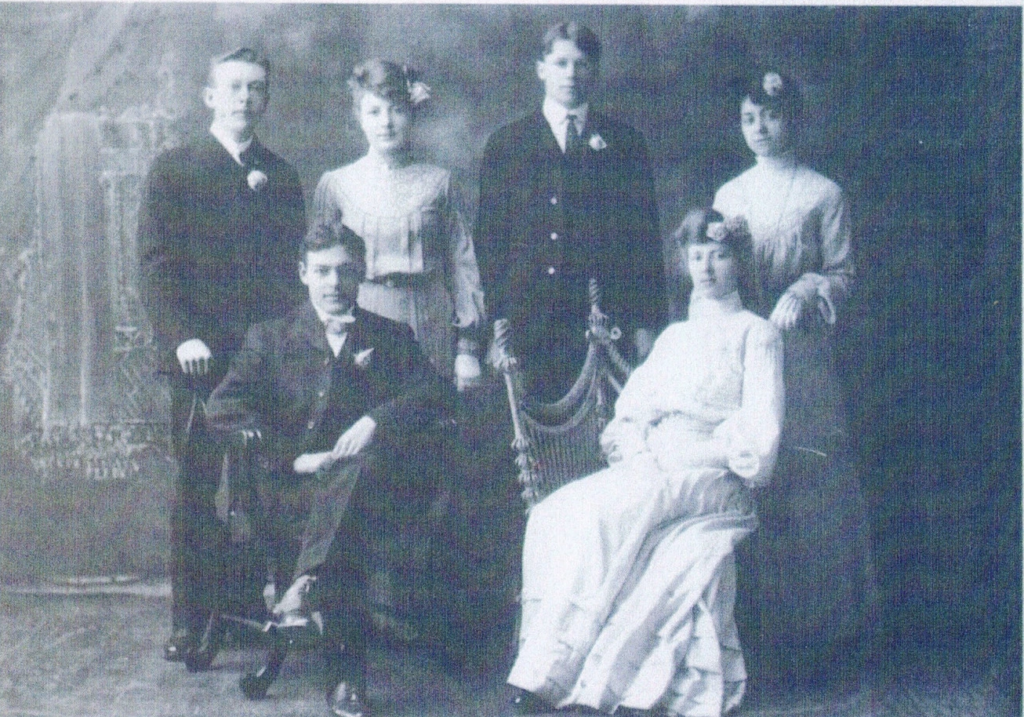
Preface
The Eastern Michigan Picards share a common great grandfather and great grandmother both of whom emigrated from Quebec (from south of the St. Lawrence River). These were my great grandparents Alfred Picard and Zepherine Legault (Zepherine Legault Lachapelle Picard). We also share a history with hundreds of members of our family who still live near Valleyfield, in the South bank of the St. Lawrence.
From the middle of the nineteenth century focus here is on the descendants of Alfred Picard, our immediate family who migrated from Beauharnois County and the farmland west and traveled to Eastern Michigan (Saginaw). In the process, the United States branch of the family, through marriage and the “melting pot” philosophy of U.S. nationalism, became Anglophone in culture and language.[i]
[I] See John Higham, Strangers in the Land: Patterns of American Nativism, 1860-1925(New York: Athenium, 1963), p. 15-17.
The story here – “The Eastern Michigan Picards – is the story of the arrival of the family in Eastern Michigan, of Alfred’s migration from Quebec to Saginaw and his four daughters, Minnie, Victoria (Vic), Marion and Louise). It is the story of Alex’s decision to settle down and have a family and of Alex’s four children, Vincent, Theol, Beatrice and Helen.
There are several parts to the story of the Eastern Michigan Picards on this web site. “Portal to Portal – Politics, Show Business and Law in Eastern Michigan and Beyond” tells the story of Frank Picard, his family (Frank, Jr., Ruth, Pat and John) and the youngest of the Picard brothers, Joe (and family). Frank had a rich career in the law and Democratic politics but it was his love of music and entertainment that motivated him.
“A Few Stickers on a Few Sticks” is the story of the Brothers Picard (Fred, Phil, Alex and Joe) and Vince Picard in Vaudeville and in the great railway circuses of the late nineteenth and early twentieth century. It is a story of their friends, who represent a cross section of the entertainment business from the 1890s to the 1960s.
Following this comes the story of Alex’s son Vincent (Vince or Pic) who “retired” from show business at the ripe old age of 24 and spent the rest of his life regretting it. The next book “Vince Picard and Family: He Had to Leave Show Business,” tells the story of Vince, his three sisters and many friends. It is the story of Alex’s three daughters, Theol (Arnold), Beatrice (Seiler) and Helen (Kretschmer). It is stories of General Motors, the Michigan State Police and of course the famous “health food” Wheat Germ.
Alfred: The Grand Trunk Railway
My great grandparents were Alfred A. Picard and Zephirine Legault Lachapelle Picard). Alfred moved to the U.S. during the American civil war (1864), and risked being drafted in the Union army he would revisit Beauharnois periodically.
Alfred had a son by his first marriage, Fred Picard who died in New York City in 1920. He also had a stepson from Zepherine (Jerry LaChappelle) from her earlier marriage. Their first son Philip died in Washington State (1910) after a fall in the circus that he never recovered from.
There were three of Alfred’s sons who stayed in Michigan, Alex (my grandfather), Frank (your grandfather- the Judge) and Joseph who became postmaster of Jackson Michigan, at least in part due to the efforts of your grandfather. My father was Alex’s only son, Vincent, and he and your mother are first cousins. My father died in 1988.
Fred, Phil, Alex and Joe (briefly) were all in the circus at various times between 1895 and 1915 as the “Picard Brothers” and the “Flying Picards” with Ringling Brothers. Frank though he trained on the horizontal bars, was the only one to go to University. My father was in vaudeville and the circus between 1919 and 1927. They all worked on the horizontal bars.
There are many stories here and in our common ancestors (including the kidnapping of a 10 year old Indian boy at the beginning of the 19thcentury) but we will save those for a later time.
Chapter 1
“The Saloon Keeper” or “A Boarding House reach”
Alfred moved to the U.S. during the American civil war (1864), and risked being drafted in the Union army he would revisit Beauharnois periodically.
In 1868, Alfred Picard, then listed as a saloon keeper and hotelier.
In 1872, Alfred Picard Sr. was the Proprietor, Peoples Hotel, Miller and Washington, Northeast Corner.
Alfred Picard “followed various occupations in the early days of his Saginaw life but he was best known as a hotel keeper. He was for many years the proprietor of the old Central House, at that time one of the important hotels of the city, which was situated at the corner of Water and Thompson Streets.”[i]
In 1874, Alfred Picard is noted as the proprietor of a Boarding house at Water between German and William. A Joseph Picard (or Picard) is resident in Saginaw and is listed as a “laborer.”
In 1876, Afred Picard is listed as a Saloon Keeper.
The impact of the temperance movement on this society was important. Of equal importance was the impact of Panic (the nineteenth century term for an economic recession).
In 1879. Alfred Picard is listed as Proprietor of a Boarding House, northeast corner of Miller and Water. Foot of Mallard. Declared, “Picard House.” Declares Intention of becoming Citizen of U.S. March 17, 1879
Donalda Picard born March 9, 1880- Died at Birth or shortly thereafter.
In 1884, Alfred Picard and his family move back to St. Louis de Gonzogue for three years. Alfred Sr. Lost his eye sight. His health is broken. He suffered from Paresis.
1886-87. Alfred Picard was the proprietor of Central House, South Franklin between William and Hayden, 321 South Franklin. The greater part of Alfred Picard’s property apparently was lost in the panic of 1887.
1893- Mararetha Picard was born, died and was buried. April 30, 1893.
In 1893 and 1894 Alfred was a Grocer, at 613 Atwater, Residence. He was a General Agent for , “Dr. Dutton’s Vegetable Discovery”
“Keep Your Blood Pure, “FOR THE BLOOD IS THE LIFE!” Dr. Dalton’s Vegetable Discovery, the World Famed BLOODMIXTURE, is a guaranteed cure for all blood diseases. It is the most searching blood cleanser ever discovered, and it will free the system from all known blood poisons, be they animal, vegetable or mineral. … Horace L. Fairchild, M.D., New Brunswick, NJ. … sole proprietor. [ca. 1892].”
[i]“Death Comes to Alfred Picard,” Saginaw Courier-Herald(February 10, 1909), p. 1 (Section Two)
My great grandfather, Alfred was born in May 22, 1846[1]in St. Timothee, Quebec. St. Timothee was, and is, a market town. Agriculture and fishing are the two main economic activities. It is a market gardening center and has had a factory which produced cheese and butter. In the nineteenth century, at the time of Alfred’s birth, the town had about 600 residents. As a parish the village dates back to 1820 and as a municipality to 1847. Alfred died on February 9, 1909 in Saginaw Michigan.
[1] According to his grave stone. His newspaper obituary places his date of birth as 1847.
Alfred was one of nine children of Isaac Picard (For a further discussion of this see the section entitled “From France to the St. Lawrence Valley”). In 1864, at the age of 18, Alfred moved to Saginaw, Michigan, from St. Louis de Gonzague, Quebec, taking the Grand Trunk Railway from just south of Montreal in Valleyfield, lower Canada.[1] Alfred left three months before he was to graduate from law school for reasons not entirely clear.
My immediate family descended from Alfred, who migrated from Beauharnois County, Quebec in the nineteenth century to Eastern Michigan (Saginaw) and his second wife Zepherine Legault. I now have been able to tentatively locate a number of descendents of Isaac. Alfred’s five brothers and three sisters stayed behind in Quebec. I have begun to work on tracing back the Legault family (Zepherine’s side of the family) who are also resident in Beauharnois County, and the region south of Montreal. The Legaults are a huge family in Quebec and there are descendents of Hugues Picard in both Dorval/LaChine and south of the St. Lawrence in the Valleyfild/Beauharnois area of Quebec.
Alfred was one of nine children of Isaac. My immediate family descended from Alfred, who migrated from Beauharnois County, Quebec in the nineteenth century to Eastern Michigan (Saginaw). I now have been able to tentatively locate a number of descendents of Isaac. Alfred’s five brothers who stayed behind in Quebec and have begun to work on tracing back the Legault family (Zephirine’s side) who are also resident in Beauharnois County, South of Montreal. The Legaults are a huge family in Quebec and there are descendents of Hugues Picard in both Dorval/LaChine and south of the St. Lawrence in the Valleyfild/Beauharnois area of Quebec.
When Alfred immigrated to the United States in 1864 he settled in East Saginaw, in Eastern Michigan. In doing so, he founded the Eastern Michigan Picard family parts of which have lived in Saginaw Michigan ever since. In the process, the United States branch of the family, through marriage and the “melting pot” philosophy and U.S. nationalism, became Anglophone in culture and language.[1]My great grandparents were Alfred Picard and Zephirine Legault (Zephirine Legault Lachapelle Picard). Though Alfred moved to the U.S. during the American civil war (1864), and risked being drafted in the Union army he would revisit Beauharnois periodically.
Alfred was the only member of his family to emigrate to the U.S. that early, though a brother Joseph may have lived with him in Saginaw for a few years in the 1880’s. Alfred’s father, brothers and sisters all lived in St. Louis de Gonzague, St. Timothee, Beauharnois and St. Stanislas in Beauharnois County (Seigniory) south of the St. Lawrence River near Montreal in Quebec. Other descendants of Isaac Picard later moved to New England or New York state.
“Alfred Picard “followed various occupations in the early days of his Saginaw life but he was best known as a hotel keeper. He was for many years the proprietor of the old Central House, at that time one of the important hotels of the city, which was situated at the corner of Water and Thompson Streets.”[i]
Education: Law, College of St. Therese, Quebec College of St. Therese is a branch of the Lavalle University, Quebec City
n[i] “Death Comes to Alfred Picard,” Saginaw Courier-Herald(February 10, 1909), p. 1 (Section Two)
[1] John Higham, Strangers in the Land: Patterns of American Nativism, 1860-1925(New York: Athenium, 1963), p. 15-17.
A Large Combined Family
In 1864,the eighteen-year-old French-Canadian Alfred Picard traveled from St. Louis de Gonzague, Quebec, to Saginaw, taking the Grand Trunk Railway. In 1868 (then a “Saloon Keeper”) he will marry Amelia Poquet of Quebec, at St. Mary’s Catholic Church. Amelia will die March 17, 1874, of complications from the still birth of their fourth child. Their 2 1/2 year-old daughter will die nine months after her mother, and their first-born son dies at the age of 17.
Alfred was a Champion Polinee Player.
Alfred was the only member of his family to emigrate to the U.S., though a brother Joseph may have lived with him in Saginaw for a few years in the 1880’s. Alfred’s father, brothers and sisters all lived in St. Louis de Gonzague, St. Timothee, Beauharnois and St. Stanislas in Beauharnois County (Seigniory) south of the St. Lawrence River near Montreal in Quebec.
The U.S. was still engaged in the Civil War and the young man may have been liable for the draft. There is no evidence that this was a concern. Alfred left Canada shortly before earning a law degree. The reason for his departure so close to commencement is unknown. An amateur athlete, Alfred specialized in performing on a type of gymnastic (pommel) horse called a “ponie.”[2] This interest would have a profound influence on the careers of four of his sons and one of his grandsons.
[1] Transcription of a phone interview with of Marian Matyn with Dr. Louis Picard, 13, 2009, p.1
[2] Transcription of a phone interview with of Marian Matyn with Dr. Louis Picard on November 13, 2009, p.2
The First Family
Alfred and Amelia Poquet were married on March 24, 1868 in Saginaw Michigan at St. Mary’s Catholic Church. (Marriage Certificate: Emelia Poquet) Amelia, like Alfred was originally from Quebec and the marriage was most likely semi-arranged. In 1968, Alfred had been in the U.S. four years. His marriage license lists him as a “Saloon Keeper.” The witnesses to the marriage were Charles Poquet and Iorael L’Leruge. They had three children.
A man of many talents, Alfred managed, and later owned a series of hotels in Saginaw which housed French Canadians who moved there to work in the lumber business.[3] As many men did in that era, Alfred held various jobs during his life. He worked “as a saloon keeper, hotelier, a grocer, patent medicine dealer and Canadian agent.” Alfred was also deeply committed to his community and was a founder of the Holy Family Church, a French Catholic Church, in Saginaw.[4]
Between 1864 and 1880 Alfred both owned and managed the Central Hotel on Water and Johnson streets in Saginaw. The Central House on Water Street was a mecca for the lumberjacks who cleared the forests of Eastern Michigan, the Water Street area was bawdy, violent and for the most part lawless. He might have seen these boy soldiers in Saginaw, re-enacting the Civil War late 19th century.
3] Transcription of a phone interview with of Marian Matyn with Dr. Louis Picard on November 13, 2009, p.1.
[4]However he committed himself to the U.S. and Eastern Michigan.James Cooke Mills, History of Saginaw, 1918 and Saginaw Courier Herald, February 10, 1909.
Alfred’s first wife, Amelia Poquet , died in 1874. They had four children:
Joseph Picard was born on February 15, 1869 and baptized at St. Mary’s Church. The godparents were Joseph Paquette and Margueute Ste. Marie. He appears to have died in childhood.
Alfred PicardJr.(Fred) was born to Alfred and Emelie on Friday July 22, 1870 in Saginaw, Saginaw Co, Michigan. Zepherine would his step mother. His wife was named Marie.
Fred Picard got his start playing at the at the Boardwell Opera House along with Marie Dressler, and a place well known at the time for “harlots.
Fred Picard, a half brother to the eight Picard children, got his start in showbusiness playing at the at the Boardwell Opera House along with Marie Dressler, and a place well known at the time for “harlots.”
Fred, with his brother Phil, was the founding member of the Flying Picards, later joined by Alex, and briefly Joe, and worked for many years with the Ringling Brothers Circus.He was an acrobatic star for Ringling Brothers circus.[1]He died on May 21 of 1921 in New York City. His career in show business is discussed in the book manuscript, “A Sticker on a Few Sticks.” His wife was named Marie
Marie Helene Picard was born on May 25, 1872 and baptized May 26 at St. Mary’s Church in Saginaw. Her Godparents were Alphonse Dubeau and Adeline Paquette. Marie Helene died December 19, 1874. She was as her father put it, 2 years, four months and four days old when she died.
[1] Reference:Saginaw News CourierTuesday, May 17, 1921, p. 1.
Two years later, according to Alfred’s diary, his fourth “child died before birth at its eighth month in the womb of its mother on February 23, 1874.” Emilie died on March 17 1874 at 9:35 in the morning. She was buried on March 19.
Amelia had died on March 17, 1874 of complications from the still birth. Helen had died on December 19, 1874 at two years and seven months. Alfred’s first born son with Amelie, Joseph, died on December 9, 1886. He was seventeen years old. “Thus ended,” Alfred wrote, “these remarkable events of this first marriage and led to the second marriage.” Only Afred (Fred) survived from Alfred’s first marriage.
On May 10, 1874, (three months after the death of his first wife) Alfred married Zepherine Legault LaChappele (who was widowed) in Notre Dame Cathedral in Montreal, Quebec. The Legualt and the Picard families appear to have had close linkages in Beauharnois, and appeared to have inter-married more than once, a practice not uncommon as I understand it. The witnesses were Desire Laurin (Senior) for the end of the first marriage and Desire Laurin (junior) for the second. Octavia Legace was witness for Zephirine. Zepherine was the widow of Calixte Lachapelle. They had eight children together and he adopted her son by his first marriage. The children Alfred raised with Zepherine includedAlfred Picard Jr. was a half brother to the eight Picard children from the second marriage.B
Background: Notre Dame Basilique- Montreal
When it was founded in 1642, the village, then known as Ville-Marie, had its first wooden chapel which was located inside the palisade at Pointe-à-Callière (today the site of Montreal’s major archaeological museum). Dedicated to Our Lady the Blessed Virgin – “Notre Dame” – the small original chapel was operated at first by the Jesuits. Then came the Sulpician Fathers, who in 1657 undertook construction of a larger church. The Sulpician priest François Dollier de Casson was its architect, and the present-day Notre-Dame Street served as the original site. Its construction, in a Baroque style was completed between 1672 and 1683. Hughes Picard most likely worked on this building.
By 1800, Dollier’s church had become too small, and it was decided to build the church that exists today. To design the new church, the building council engaged the services of a New York architect named James O’Donnell – himself an Irish Protestant by origin. O’Donnell and opted for the Gothic Revival style that was then in vogue in England and the United States.
The main construction work took place between 1824 and 1829. O’Donnell did not live to see his work completed. He died in Montreal in 1830. Just prior to his death, he had converted to Catholicism, and was buried in the new church’s crypt, where his grave is marked by a plaque.The old church set back from the road was demolished in the summer of 1830, except for its bell tower, which survived until 1843, when Notre-Dame Basilica’s new twin towers were completed by the architect John Ostell. The western tower, nicknamed La Persévérance(Perseverance) and finished in 1841, houses the great bell christened “Jean-Baptiste.” It weighs 11 tons (11,000 kilograms or 24,000 pounds). The eastern tower, nicknamed La Tempérance(Temperance), was completed in 1843 and it houses a carillon of 10 bells.T
Quebec and Michigan
Alfred, as we have noted. was born in May 22, 1846 in St. Timothee, Quebec. Though he moved to Saginaw Michigan in 1864 he returned to Quebec several times. After his first wife, Emelia Poquet, died, he returned to Montreal to marry Zephirine Legault (Lachapelle Picard) in BasiliqueNotre–Dameof Montreal on May 10, 1874. He later lived in St. Louis de Gonzague from 1881-1883. Two of his children, Louis Alexander Picard and Marianne Picard (Mrs. Mary Ann Hemmeter) were born there in 1883 and 1884 respectively.
In the nineteenth century there were no direct diplomatic channels between Canada, Quebec and the United States.[i]The 1872 Land Act recruited immigrants to Canada. The point of entry was Halifax. By then, there was already a stream of French and English speaking Canadians moving south to New England, the mid-Atlantic and the upper Midwest. The state of Michigan because of its geographic structure, in effect pushing into Canada, had, and perhaps has, a special relationship to Canada.
In nineteenth century Quebec, traditional ideals were entrenched in a genteel tradition still entrenched in many conservative Europeans.[ii] French elites down to World War II, were docile and seemed to accept it as part of a natural order that the English (and the British Empire) ruled as part of a natural order of things.[iii]
However, as the rest of North America industrialized, in Quebec, the tempo quickened since the province was “part of the industrialized world and contiguous of its most highly industrialized regions.”[iv]
In the nineteenth century, to get from Canada to the U.S. you took a train, the Grand Trunk railway. Today in order to get to St Louis de Gonzague you can take Highway 37 from Massena New York, or Hiway 11 from Malone New York. You can also come from Ornstown Quebec by Highway 30, Highway 201 North to Highway 236. The village is near Valleyfield and about 60 kilometers Southwest of Montreal. The time it takes to travel is not that much different.
[i] Margaret Leech, In the Days of McKinley(New York: Harper & Brothers, 1959), p. 145.
[ii] Everett C. Hughes and Helen M. Hughes, “Sociologists View Point Four” in American Perspective, vol. iv, no. 2 (Spring, 1950), p. 132. Entire article, pp. 129-138.
[iii] Everett C. Hughes and Helen M. Hughes, “Sociologists View Point Four” in American Perspective, vol. iv, no. 2 (Spring, 1950), p. 134-135. Entire article, pp. 129-138.
[iv] Everett C. Hughes and Helen M. Hughes, “Sociologists View Point Four” in American Perspective, vol. iv, no. 2 (Spring, 1950), p. 137. Entire article, pp. 129-138. See also Everett C. Hughes, French Canada in Transition.(Chicago, Ill., The University of Chicago press, 1943).
Together, Zepherine and Alfred had a total of twelve children, of which four sons and four daughters survived to adulthood. Picard will manage, then own a series of hotels in Saginaw housing French Canadians working in the lumber business. His Central House on Water Street is a mecca for lumberjacks clearing the forests of Eastern Michigan.
Alfred maintained ties with and visited his relatives in Canada periodically after he moved to Michigan. Between 1880 and 1883 Alfred and Zepherine returned to Canada and lived St. Louis de Gonzague. Two of his children, Alex and Marianne were born there. However, after three years, the family returned to Michigan.
Alfred became a naturalized U.S. citizen in the 1880s after his return from Quebec. In the financial panic of 1887, Alfred unfortunately lost financial investments, both his own and probably some investments of his relatives.[5] This would have caused strained family relations at best. The financial panic of 1887 resulted from an “excess of revenues over public expenditure” which more than doubled between 1885 and 1886 and continued to increase from over $49 million in 1887 to over $55 million by June 1887. This resulted in part from the sinking-fund act which required money be set aside for future difficulties.
In 1887,The financial panic hits the country, and unfortunately Alfred Picard will not only lose his financial investments, but also those of some of his relatives. On Feb 9, 1909, hotelier, grocer, patent medicine dealer, and Canadian agent Alfred Picard will die in Pontiac, a few months shy of his 62nd birthday.
President Grover Cleveland in his Third Annual Message to Congress on December 6, 1887 demanded immediate action as the national financial emergency was “suspending our country’s development, preventing investment in productive enterprise, threatening financial disturbance, and inviting schemes of public plunder.”[6] While some of this may have been the usual political rhetoric it was clear from his speech that average people were suffering from a terrible financial burden and the resultant great anxiety. Alfred in his enthusiasm for American entrepreneurialism had succumb to this financial crisis.
Victoria Picard was a Domestic at 817 Park
1899 America at the end of the nineteenth century was divided into two parts: one was urban, Roman Catholic or Jewish and Wet. The other was rural mid-west, Southern, Protestant and Dry. Blacks were for the most part separate from each.
Alfred Picard’s Nineteenth Century
America’s manifest destiny was based on the premise that it was necessary to impose the “dominant English tongue on such Indians, Spaniards, Frenchmen or Mexicans as stood in the path of American expansion.”[i]North America for the English speaker was “A Frontier civilization…[imposed] the dominant English tongue on such Indians, Spaniards, Frenchmen, or Mexicans as stood in the path of American Expansion.”[ii]
The impact of the temperance movement on American society was important to our understanding of Alfred’s world. Of equal importance was the impact of Panic (the nineteenth century term for an economic recession).
America at the end of the nineteenth century was divided into two parts: one was urban, Roman Catholic or Jewish and Wet. The other was rural mid-west, Southern, Protestant and Dry. Blacks were for the most part separate from each.
Nativism and the Nativist movement became an important social and political factor after the civil war. Nativists were not really natives of North America, but were “rigid defenders of the power of long-present groups and traditional culture.” Most feared immigrants, blacks, and Indians (native Americans) as alien to their values.[iii] While prohibition violation was almost universal in the U.S., it was particularly wide spread in the Northeast and in America’s cities. Targets of hatred were Negroes, Jews and Catholics.
In the rural areas, of the U.S. people saw alcohol as a problem of urban life and in the city,
Rural dwellers believed, saloon keepers encouraged drinking to excess, workers spent wages that should have been going to support their families, political machines influenced voters, prostitutes and gamblers pied their trades, and immigrants gathered to discuss the homeland, speak their languages, and carry on old customers that slowed their progress toward becoming good Americans.[iv]
The Temperance Movement at the end of the nineteenth century was a potent influence on American life and was celebrated at the end of the century as the salvation of the nation. Morality had its dark side however. The protestant upper class leadership of the country tolerated prostitution, gambling and alcohol, both for the masses and for themselves. Vice, if kept in its place, was an outlet for an otherwise straight laced society.[v]To many, however, America’s cities at the end of the century represented “filth, smoke and vice.”[vi]
There was a moral rigor in the nineteenth century but it was regulated by wealth. The well off could get away with what for the middle class would see as unfit behavior. Alfred Picard, with his apparent interest in women, would have been labeled a “sporting man” when he arrived in the United States in 1866. Many men “were considered to own wives, when marriage was spoken of by most men and women in terms of the husband’s proprietorship and governance of [a man’s] wife….” Only a group of radical women, labeled “bloomers” rejected this notion.[vii]
In the early 1880s, several panics struck America. According to Erik Larson,
Banks and companies were failing across America, strikes threatened everywhere, and cholera had begun a slow white trek across Europe, raising fears thast the first plague ships would soon arrive in New York Harbor.[viii]
The late nineteenth century was a period when syphilis, tuberculosis, and other highly contagious and horrifying diseases struck men and women, most often infected by their husbands. Sexually transmitted diseases were the source of shame but were often not secret.
The Chicago Worlds Fair defined America in the late nineteenth century. Its architects had created “a dream city whose grandeur and beauty exceeded anything each singly could have imagined. Visitors wore their best clothes and most somber expressions, as if entering a great cathedral.[ix]When the Chicago World’s Fair was opened by President Grover Cleveland in May of 1893, the center of attention was on Hagenback’s Animal Show, the most famous traveling show of its time.
The year 1893, was also noted for the black panic which spread its blight on industry and banking had a psychological impact on late nineteenth century Americans similar to the effect of the Great Depression of the 1930s on Americans alive in that decade.[x]
William McKinley’s God was the God of the Republican, Protestant mid-west “the benign God of an Ohio Methodist Sunday School.”[xi]It was the America that was against religious schools and for prohibition and Sunday closing laws. According to Kevin Phillips,
The Ohio of Mckinley’s youth reflected the just-past-the-frontier culture of the burgeoning Midwest: a new unpolished middle class given to teetotaling Methodism, religious camp meetings, and small-town values, typically light-years distant from the sophistication of upper-class Eastern universities, salons and clubs.[xii]
America’s manifest destiny was based on the premise that it was necessary to impose the “dominant English tongue on such Indians, Spaniards, Frenchmen or Mexicans as stood in the path of American expansion.”[i]
1899 America at the end of the nineteenth century was divided into two parts: one was urban, Roman Catholic or Jewish and Wet. The other was rural mid-west, Southern, Protestant and Dry. Blacks were for the most part separate from each.
[i] Harlan Cleveland, Gerard J. Mangone, John Clarke Adams, The Overseas Americans(New York: McGraw-Hill, 1960), p. 239.
The gilded economy of the late nineteenth century, “with its money wars and overleveraged [and watered down] stocks, was slipping toward the great depression of the mid-nineties.”[xiii]
The 1893 Chicago World’s Fair defined America in the late nineteenth century. Its architects had created “a dream city whose grandeur and beauty exceeded anything each singly could have imagined. Visitors wore their best clothes and most somber expressions, as if entering a great cathedral.[i]
[i] Erik Larson, The Devil in the White City: Murder, Magic, and Madness at the Fair that Changed America(New York: Crown Publishers, 2003), p. 5.
[5] Picard, Louis A. Transitions: the biography of a North American Family, an illustrated history (draft document powerpoint), 2009. Used with permission of the author.
[6] Third Annual Message [to Congress] (December 6, 1887, Miller Center of Public Policy).
Alfred’s Tragedy
I am now beginning to piece together what might have happened to Alfred in the last years of his life. He has been listed variously as a saloon keeper and an hotelier, a grocer, patent medicine dealer and Canadian agent. For several years, he owned and managed the Central Hotel on the corner of Water and Johnson in Saginaw later described as a “mecca for picturesque logshoremen.”
When he went back to Quebec to marry Zepherine in 1874 after the death of his first wife, I believe he was a somewhat wealthy middle class man, a prominent citizen of East Saginaw according to his obituary and of course one of the founders of the French speaking Holy Family Church in Saginaw, Michigan.
During the 1870s and 1880s, Alfred continued to have links with his family in Quebec and Alfred and Zepherine lived in Beauharnois for several years (between 1880-1883). Two of his children, Alex and Minnie (Marion) were born in Beauharnois County (St. Louis de Gonzogue), Quebec. They eventually moved back to Eastern Michigan in 1884-5. (Alfred traveled back and forth to Quebec a number of times- train service was probably better then than it is today).
Between 1880 and 1881 he and his wife moved back to Beauharnois. During this time his vision began to fail as the effects of a form of dementia (paresis) began to appear. Alfred and Zepherine were both picked up in the 1881 Canadian census as living in Beauharnois, Quebec. However, Alfred and Zepherine are also both identified in the U.S. 1980 census in Michigan where he took out citizenship in the 1880s.
I believe Alfred lost all of his money in the Panic of 1887 and I think he may also have lost some of his brothers’ money as well. I’ve found evidence of two of his brothers having to sell property in Canada during the 1880s perhaps either to invest with Alfred or to pay back loans. (This is a bit of speculation I realize).
With regard to his illness and death, when Alfred married for the first time in 1868 he may already have been infected with the syphilis that eventually killed him. Syphilis of the brain is one result of third stage syphilis which appears several decades after infection and occurs in only 5% of those infected. A person with third stage syphilis is no longer contagious which would account for the fact that Zepherine as far as we know did not come down with the disease.
Any abnormal behavior which Alfred may have exhibited could be attributed to his third stage syphilis. This is no excuse of course but perhaps an explanation. However, there is now evidence that a diagnosis of neurological syphilis was overly used in the late 19thcentury. (Some now question whether or not Winston Churchill’s father actually died from it or from a hereditary brain disease). There are other possibilities which can be explored. (Since some of these are genetic in origin I hope to gain access to Alfred’s records at the Pontiac Mental Asylum held by the State of Michigan).
Alfred died in 1909 and Zepherine died in 1931 both in Saginaw (Eastern Michigan). Alex and Frank Picard, two of Alfred’s sons lived their whole lives in Saginaw Michigan. Alex, three of his brothers and his son Vincent all joined the circus performing as aerialists. Frank (like his father) read law, became a political activist and a federal judge.
Death and a Second Marriage
On May 10, 1874, (three months after the death of his first wife) Alfred married Zepherine Legault LaChappelle (who was widowed) in Montreal, Quebec. They were married in the Notre Dame Basilica on May 10, 1874.
On May 10, 1874, (three months after the death of his first wife) Alfred married Zepherine Legault LaChappele (who was widowed) in Notre Dame Cathedral in Montreal, Quebec.
The Legualt and the Picard families appear to have had close linkages in Beauharnois, and appeared to have inter-married more than once, a practice not uncommon as I understand it.
The witnesses were Desire Laurin (Senior) for the end of the first marriage and Desire Laurin (junior) for the second. Octavia Legace was witness for Zephirine. Zepherine was the widow of Calixte Lachapelle. They had eight children together and he adopted her son by his first marriage.
The children Alfred raised with Zepherine included Alfred Picard Jr. was a half brother to the eight Picard children from the second marriage.They also raised Jerry LaChappele Zepherine’s son from her first marriage.
****************************************
Jerry LaChappele
Desire Laurin “Jerry” Lachapelle was Born December 12 1867 Beaurnois, Salaberry Quebec and died August 20, 1945 Saginaw Michigan. His father was Joseph Calixte Jeanott Lachapelle and his mother was Zepherine Legault (then Lachapelle). Lachapelle was Zepherine’s first husband (she was 15 when she married).
Jerry LaChappele, was Zepherine’s son from her first marriage with Calixte LaChappele=. He was born December 12, 1867 and died in August of 1945. The relationship with Jerry LaChappele was somewhat mysterious and strained over the years. He may have been an alcoholic and worked as a Janitor in one of the Saginaw Schools, Center middle school.
As one descendent wrote:
Sorry I haven’t gotten back to you but It has taken me a bit of time to truthfully examine my feelings about the LaChappeles and the Martinos. First of all, about Uncle Jerry. It always seemed to be as a child that he was a bit of an embarrassment to our family. Nothing in particular was ever said in a derogatory manner…he was just kind of ignored. I remember that my dad got him a job as a janitor at Central Junior High School but when I transferred to that school in the 9th grade my father warned him to stay away from me.
At the time some of my friends pointed out to me that my uncle was the “janitor”and I didn’t particularly react that his job was supposed to be any disgrace…actually I remember seeing him in the halls and spoke to him calling him Uncle Jerry. I think it worried my dad more than me. When he died there was some problem about getting him buried in the Church but that seemingly was solved…even though it was the first time I actually knew that he was living with a woman that wasn’t his wife and that he was an alcoholic. So much for “Uncle Jerry”
Jerry Lachapelle Died on August 20, 1945. This is the text of the telegram Frank A. Picard to Louise Kuiper, his sister in California:
“BURIED JERRY TODAY. HE DIED MONDAY. MORE BAD NEWS. JOHNNY DEPRIVED OF FURLOUGH AND WILL ARRIVE AT CAMP PENDLETON OCEANSIDE CALIF END OF WEEK ON WAY TO PACIFIC. ALL OF US HEARTBROKEN. RUTH MAY GO BUT SEE IF YOU CAN LEARN HOW LONG HE’LL BE THERE. FRANK.
The immediacy of the telegram! This 1945 Telegram from Frank Picard to his sister Louise (Picard) Kuiper tells her of Jerry Lachappele’s death. He was 77 at the time.
The Sisters
Alfred and Zepherine had Four daughters (Louise, Victoria, and Marion. and Louise) all of whom, except for Victoria, moved west. A fifth, Louise Danielle born in 1980 died a year later).
“Those who knew them, have some great stories about Aunt Louise and Aunt Marian. They both lived in California at the end of their lives and at different times. According to their niece, “I was the only one out here to take on that job and I must say I was glad to do it.”
Marie Hemina Picard
Minnie Hemina was born on April 18, 1875. The godparents were Theofile Laroeque and Mecthilde Desoulliers. She married a Mr. Hambeau and moved to Seattle, Washington
Marie Louise Victoria Picard
Victoria, “Aunt Vic” was born on June 10, 1878 in Saginaw, Saginaw County, Michigan and died on October 23, 1957 in Death: 23 Oct 1957 in Saginaw, Saginaw Co, Michigan. She Married James Martino in 1920 in Detroit, Wayne Co, Michigan. James was born in Palarmo, Italy on December 8, 1888 and died on April 4, 1957. She was ten years older than James.
James Martino was born on December 8, 1888 in Palarmo Italy and married Victoria in Detroit in 1920. He died in Saginaw Michigan on April 7, 1957Aunt Vic and Jim Martino had two children. Robert V. Martino was born in Detroit. He was born on March 5, 1926. He ran for Saginaw Township Council in the Primary Election of August, 2, 2002. His wife was Phylliis Galarno.
They were married: on May 3, 1947. His spouse died on July 21, 2007. He died on December 3, 2007. He was cremated. He served in the military (U.S. Army) in Korea. He was cremated. Robert was active locally in the Boy Scouts and was a member of the Roman Catholic Hall of Fame. His Church was St. Thomas Aquinas (Funeral Home- Snow). There daughter is Rose Marie Martino.
Speaking of the Martinos, one of their cousins said
“I don’t really know why I think the children of Aunt Vic were adopted. I don’t think she had any of her own because I remember that my mom said that Grandma Picard had said that none of her daughters, mostly Aunt Marian and Aunt Louise “didn’t know how to do it”…What a kick…eh? I have no idea what Jim Martino did…but I somehow have a recollection of the son going in to the army. I have an idea that the daughter’s name was Rosemary. Good luck…if you find them…good for you.”
According to another descendent,
Now about the Martinos…that’s another story. The only time I ever remember seeing Aunt Vic or her adopted children was at Aunt Louise’s shoe store on Jefferson Ave. Aunt Louise was always very nice to them…and kept a good connection [thoughout her life]. When I was married…the very day of my wedding, early that morning, I got a telephone call from Aunt Vic in which she curtly told me that she wouldn’t be coming to my wedding because she didn’t want to mix with “all of them swells”, My dad was furious and chewed her out for hurting my feelings on my wedding day. The last time I ever saw her was at my dad’s funeral when she came to Holy Family and insisted that she go first up the aisle because “I’m the oldest” Guess she had a pretty big chip on her shoulder. Sorry I have to relate this to you in this way….as you can probably interpret from my thoughts…this part of the family was not too acceptable to my immediate family.”
Another noted:
My brother mentioned you were asking about some other Picard’s in the Saginaw area and he thought it was a Martino. I knew of a sister of Grandpa’s whose last name was Martino, they had a daughter by the name of Rose Marie. My mother kept in contact with her. When I started working at H&R Block I worked with an Italian lady who knew the Picards and were friends with the Martinos. It sounded like he was very well connected with crime in the Detroit area, whether or not it was Mafia she never said. I think my boss’s family had connections in that direction. Do you remember the Napolitano Bakery in Saginaw? Their bread was always used at the Tony’s restaurants for the steak sandwiches. This was family of my boss. She seemed to know the history of the separation of the Picards from their sister. I should have paid more attention to this. My mother always said it was because she had married out of her French heritage into one of Italian and also one of some shady background. Trying to jog my memory, I think her name was Victoria Martino.
Aunt Vic and Jim Martino had two children Robert V. Martino wasn in Detroit. . He was born on March 5, 1926He lived at 5119 Kentford Dr. North Saginaw 48603.( He ran for Saginaw Township Council in the Primary Election of August, 2, 2002. His wife was Phylliis Galarno. They were married: on May 3, 1947. His spouse died on July 21, 2007.at the age of He died on December 3, 2007. He was cremated. He served in the military (U.S. Army) in Korea. : CREMATION. He was active locally in the Boy Scouts and was a member of the Roman Catholic Hall of Fame. His Church was St. Thomas Aquinas (Funeral Home- Snow). There daughter is Rose Marie Martino, 5258 Baines Dr, Saginaw, MI 48638- 5709. (989) 793-8108
Mary Ann Picard
Mary Ann Rosalia Picard was one of two children of Alfred and Zepherine born in Canada (The other was Alex). She was born in St. Louis de Gonzague, Quebec on August 30, 1884. She married Henry C. Hemmiter on January 9, 1908 at the age of 23. Henry sold automobiles in Pontiac Michigan where they lived until his death in 1916 of carcinoma of the intestinal track.
She never remarried but moved to California in 1954 where she died in Los Angeles on August 3, 1969).
Aunt Marian had “some severe surgery on her face after a cancer was removed from her mouth and that was really sad since we had to feed her through tubes. It was good for my kids to learn that you take care of your own.”
Marion died on August 3 1969 in Los Angeles, Los Angeles Co, California. (Her husband was Henry J Hemmeter, date of Birth December 20 1884; Saginaw, Saginaw Co, Michigan). His father was George Michael Hemmeter. His mother was Anna Barbara Breiter.
Louise Picard
Marie Louise Josephine (Louise) Picard was born on January 2, 1888. The Godparents were Desire Lachapelle and Marceline Legault. Louise Picard (Marie Josephine Louise Picard) married Paul Kuiper. Paul was born onJuly 1, 1890 in Grand Rapids Michigan.
Frank A. Picard was born 1889 in Saginaw, Saginaw Co, Michiganand died February 28, 1963 in Saginaw, Saginaw Co, Michigan.[i]
Ruth Mary Campbell on Louise and Marion
We share a common great grandfather and great grandmother: Alfred and Zepherine Picard (LeGault) both of whom emigrated from Quebec (south of the St. Lawrence River. They had three daughters (Louise, Victoria, and Marion) all of whom moved west. You said you spent time with Louise. I would be interested in your impressions of her when we get a chance.
According to Ruth Mary, “I think Meg probably has some great stories about Aunt Louise and Aunt Marian. They both lived with us here in La Jolla at the end of their lives at different times. I was the only one out here to take on that job and I must say I was glad to do it. Aunt Marian had some severe surgery on her face after a cancer was removed from her mouth and that was really sad since we had to feed her through tubes. It was good for my kids to learn that you take care of your own.”
Alfred had a son by his first marriage, Fred Picard who died in New York City in 1920. He also had a stepson from Zepherine (Jerry >LaChappelle) from her earlier marriage. Their first son Philip died in Washington State (1910) after a fall in the circus that he never recovered from.
There were three of Alfred’s sons who stayed in Michigan, Alex (my grandfather), Frank (your grandfather- the Judge) and Joseph who became postmaster of Jackson Michigan, at least in part due to the efforts of your grandfather. My father was Alex’s only son, Vincent, and he and your mother are first cousins. My father died in 1988.
Fred, Phil, Alex and Joe (briefly) were all in the circus at various times between 1895 and 1915 as the “Picard Brothers” and the “Flying Picards” with Ringling Brothers. Your grandfather, though I believe he >trained on the horizontal bars, was the only one to go to University.My father was in vaudeville and the circus between 1919 and 1927. They all worked on the horizontal bars.
There are many stories here and in our common ancestors (including the kidnapping of a 10 year old Indian boy at the beginning of the 19thcentury) but will save those for a later time. I am copying this to your mother so she can make corrections, etc. I know little about the three daughters but I believe your mother has pictures, documents, etc.,which I will try to go through when I visit her over Labor Day.
[i] Harlan Cleveland, Gerard J. Mangone, John Clarke Adams, The Overseas Americans(New York: McGraw-Hill, 1960), p. 239.
[ii] Harlan Cleveland, Gerard J. Mangone and John Clarke Adams, The Overseas Americans(New York McGraw-Hill Books, 1960), p. 239.
[iii]David E. Kyvig, Daily Life in the United States, 1920-1940: How Americans Lived Through the ‘Roaring Twenties’ and the Great Depression(Chicago: Ivan Dee, 2002), p. 9.
[iv]David E. Kyvig, Daily Life in the United States, 1920-1940: How Americans Lived Through the ‘Roaring Twenties’ and the Great Depression(Chicago: Ivan Dee, 2002), p. 20.
[v] Erik Larson, The Deavil in the White City: Murder, Magic and Madness at the Fair That Changed America(New York: Crown Publishers, 2003), p. 57.
[vi] Erik Larson, The Deavil in the White City: Murder, Magic and Madness at the Fair That Changed America(New York: Crown Publishers, 2003), p. 130.
[vii]Thomas Keneally, American Scoundrel: The Life of the Nortorious Civil War General Dan Sickles(New York: Anchor Books, 2002), p. 121.
[viii] Erik Larson, The Devil in the White City: Murder, Magic, and Madness at the Fair that Changed America(New York: Crown Publishers, 2003), p. 145.
[ix] Erik Larson, The Devil in the White City: Murder, Magic, and Madness at the Fair that Changed America(New York: Crown Publishers, 2003), p. 5.
[x] See Margaret Leach, In the Days of McKinley(New York: Harpers, 1959), p. 61.
[xi] Kevin Phillips, William McKinley(New York: Times Books, 2003), p. 9.
[xii] Kevin Phillips, William McKinley(New York: Times Books, 2003), p. 15.
[xiii] Kevin Phillips, William McKinley(New York: Times Books, 2003), p. 64.
.The Other Picard Brothers
Phil Picard
Patrick Phillipe Peter Picard, “Phil” was Born on February 19, 1877. His godparents parents Joseph Jaques and Marie Raiaume. Phil also performed in the circus and in Vaudeville and became part of the “Brothers Picard- French Gymnasts.” Phil was a gymnast and performed on the horizontal bars until he was injured in 1903.
Frank A. Picard
Frank was born 1889 in Saginaw, Saginaw Co, Michiganand died February 28, 1963 in Saginaw, Saginaw Co, Michigan.[1]
His story is told in the book length manuscript, “Portal to Portal” on this web site.
Jospeh A, Picard
Joe Picard, (Uncle Joe), was the last born of Alfred and Zepherine. He was born on August 2, 1892.
His Godparents were Alfred and Minnie Hembeau
He married to Edna Foley on November 15, 1916 in Saginaw. Michigan. They had one child, Phyllis Picard was married to Jack Love.
Joe, the youngest brother, was long time Postmaster of Jackson Michigan, nominated by President Franklin D. Roosevelt, at the recommendation of his elder brother Frank.
Joseph (Joe) A Picard’s birthday was August 2, 1892. His godparents were Alfred and Minnie Hembeau.
Louis Alexander Picard and Family
Alex Picard (Louis Alexander) was born in St. Louis de Gonzague on March 9, 1883. His Godparents were Emelie (Picard) Seguin and Joseph L. Seguin.
He was married to Marie Duberville on 26 November 26, 1903.
Alex died on May 28, 1952 in Saginaw, Saginaw Co, Michigan.
[i]Alex Picard’s Children were:

Vincent Picard
Vincent was born on August 18, 1904
Theol Marie Picard
Birth: 25 Sep 1906in Saginaw, Saginaw Co, MichiganDeath: 20 Dec 1992 in Saginaw, Saginaw Co, Michigan. Married Alfred F. Arnold.
Saginaw News Monday, December 21, 1992 (D7)
Name: ARNOLD, THEOL MARIE Maiden Name: PICARD
Spouse’s Name: ARTHUR F.
Date of Birth: Tuesday, September 25, 1906 Place of Birth: SAGINAW, MI
Date of Death: Sunday, December 20, 1992 Place of Death: SAGINAW TWP.MI
Cemetery: FOREST LAWN
Spouse: Arthur F. Arnold, Birth: 28 Mar 1903 in Saginaw, Saginaw Co,Mi Mi
Death: 17 Oct 1974 in Saginaw, Saginaw Co, Michigan
Beatrice Picard
Birth: 7 Aug 1908 n Saginaw, Saginaw Co, Michigan
Marriage: Howard Louis Seiler, Jr.
Children: Nancy Seiler and Howard Louis Seiler, Jr.
Marriage: Charles H Kretschmer, Jr11 Jun 1939
10 Jun 2005 in Pigeon, Michigan
Spouse: Birth: 16 Feb 1910 in Saginaw, Saginaw Co, MichiganDeath: 5 Sep 1969 in Sand Point, Michigan
Helen Picard
She was born on 7 October 1917 in Saginaw, Saginaw Co, MichiganHelen died on 10 June 2005 in Pigeon, Michigan. Helen married Charles H. Kretschmer on11 June 1939.
She had four children
Helen Louise Kretschmer
Catherine Kretschmer
Christine Kretschmer (deceased)
Cynthia Kretschmer
Death: 18 Dec 1996 in Mason, Michigan
Chapter Two
“The Wagon and the Watch”
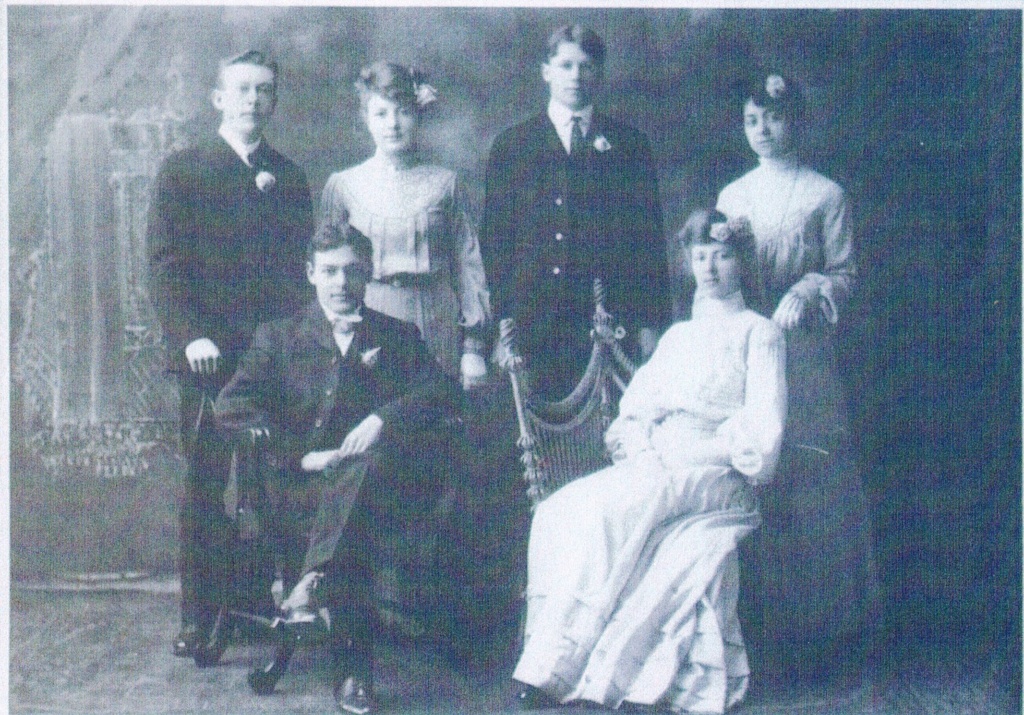
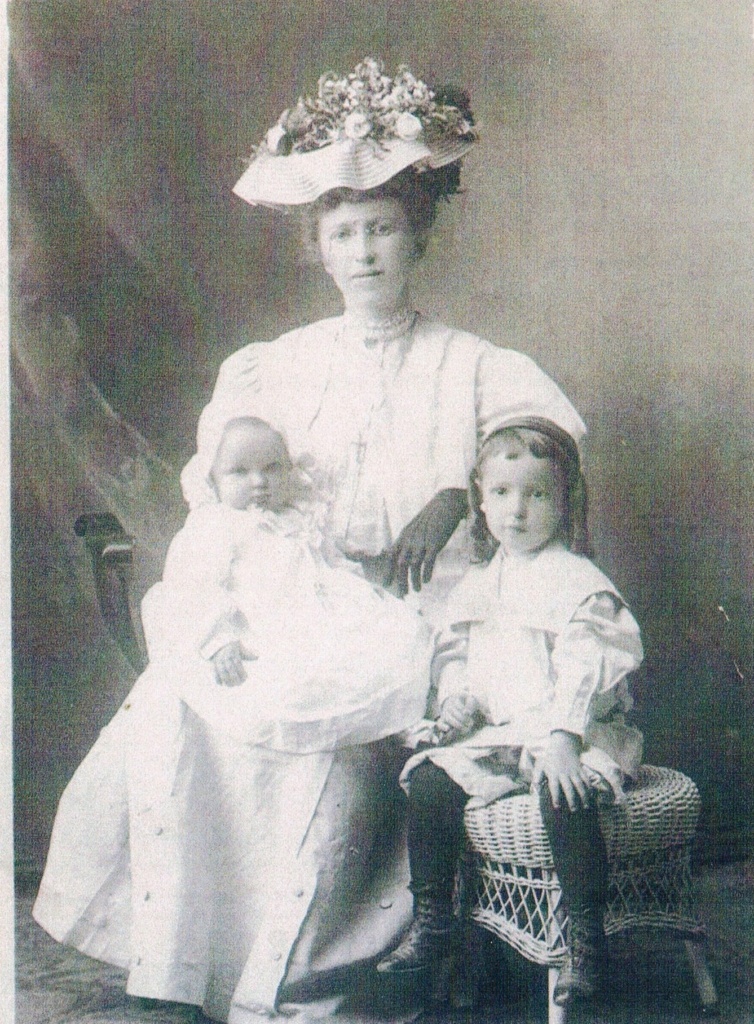
1917
Originally a video produced by Saginaw Photo, this is a collections of movies shot by jeweler and camera enthusiast Dewey Hesse from 1913-1927. Included are scenes of downtown Saginaw, Michigan during the 1920’s, parades, the old airport, the ice harvest and skating in Hoyt Park. Narration by Elmer Ganschow.
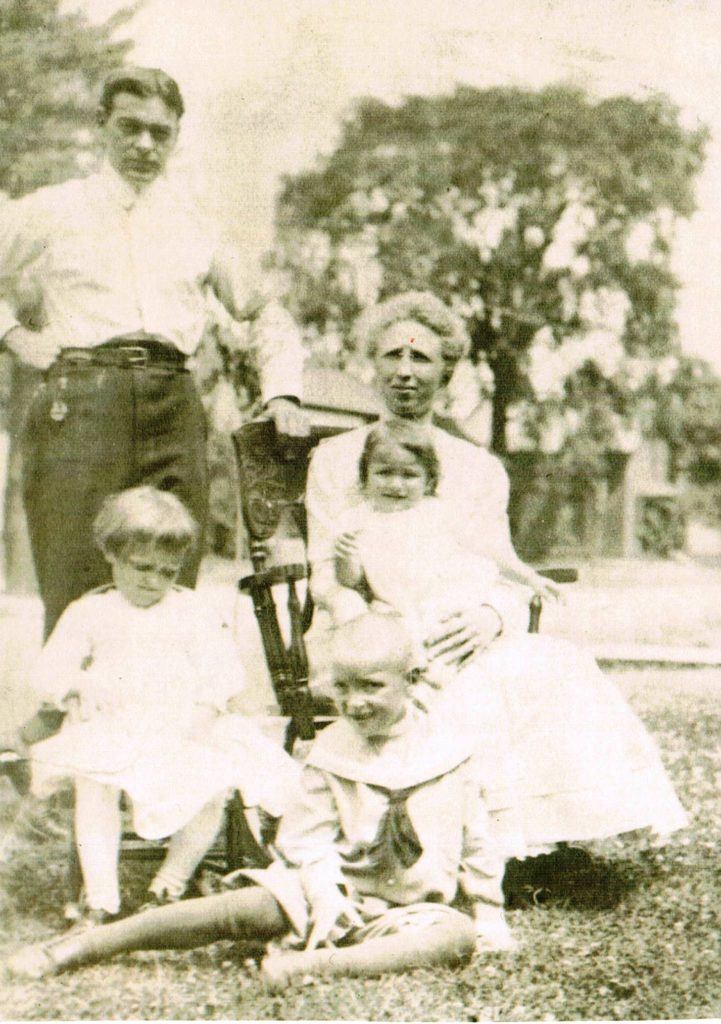


Images of Grandmere
1920-1935
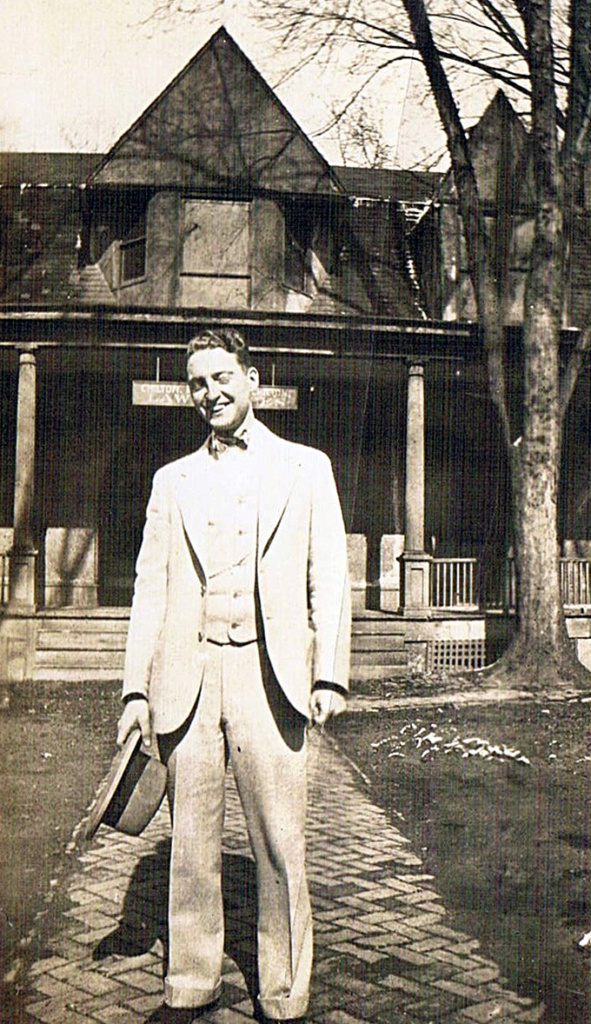
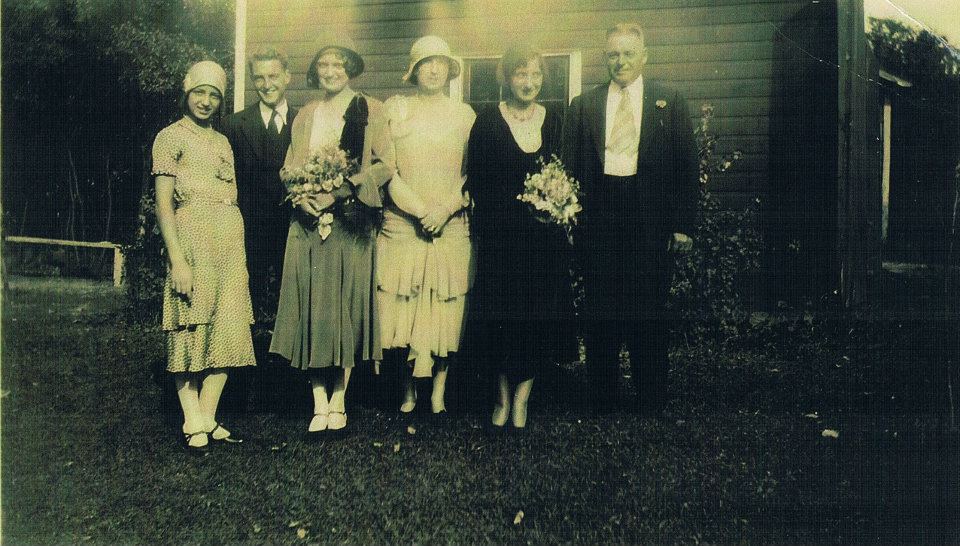
Vince and his sisters

When Howard Louis Seiler was born on August 14, 1910, in Michigan, his father, Howard, was 30 and his mother, Irene, was 23. He had two daughters with Beatrice L. Picard, Jack and Nancy. Jack died on February 9, 1973, in East Lansing, Michigan, at the age of 62.
The Kretschmers
Charlie (Charles) Kretschmer invented Kretschmer’s Wheat Germ in 1936. Three years later he married Helen Picard, Alex’s youngest daughter. Until 1965, the wheat germ was produced in Carrollton Michigan, a suburb of Saginaw.
Kretschmer Wheat Germ is now made in Manhattan, Kansas. While now eaten by many as a health food, Kretschmer Wheat Germ has been a fixture of the American diet for decades.
The Family 1950 – 1963
“I am not sure if I have told you this story about your father or not. When I was in the hospital in 1950 with polio, starting in September through January your Dad visited me regularly bringing me a book to read — some I could keep and others were from the library. Mostly dog and horse stories and then into Nancy Drew and Judy Bolton mysteries. But that Christmas season he got a radio from somewhere and I was able to use until after Christmas. Remember no radios or TVs were available for the hospital rooms and many places. I am not sure which radio station he worked at then but every time the tune Silver Bells was played it was dedicated to Vince’s niece in St. Mary’s Hospital. Today still it is my favorite Christmas song and always remember Uncle Baa.”
Theol Marie (Arnold) Wasco.
Chapter 6 – “The Four Sisters”
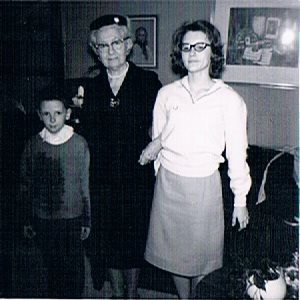
Somewhere in time…..
“One snowy night around Christmas time, Drew McKinnon and I went Christmas shopping in down town Saginaw. It was a Saginaw long gone…Morleys was going strong, the windows decorated with animated displays…dancing reindeer, and waving Santas…..Just as Hudson’s was Detroit’s Macy’s, Morley Brothers was our Hudson’s. It was right between the Second National Bank building, (the tallest building in town..12 floors!), and the Temple Theater…We’d had plenty of snow, and it was snowing big flakes as we walked around town. It was lit up big time….Colored lights sparkling things and people were everywhere. All the stores were decked out in their finest…Music was playing. The words hustle and bustle come to mind…..We went into the store that had the little baskets that carried payment and receipts somewhere up stairs and back on little wires. Watching them chug along was really cool…we walked through Kresge’s, checked out the fish and the birds and the turtles for sale. There were a lot of stores to go through back then. We had french fries and cokes at Cunningham’s or someplace, and we watched pretty girls. Pretty sure we made some juvenile comments.
“Drew wanted to get his dad an umbrella for Christmas. He bought it at Morleys….The problem was that his dad was coming to pick us up. How do you hide an umbrella? Well, the solution was simple to us. The problem could be solved by good old fashioned Christmas deception….(Yes, it was my idea.) We didn’t hide it. We said it was mine. When they dropped me off in the driveway, I walked stiff legged from the car, through the headlights, as if I had the umbrella in the leg of my pants, into the carport and up on the porch and out of view. When I got inside, Dad asked me why I was walking like that. I told him and he laughed…..”
–Jim Picard, December 9, 2011
Images of Saginaw Michigan, 1960-1975
The 1970s and Beyond
